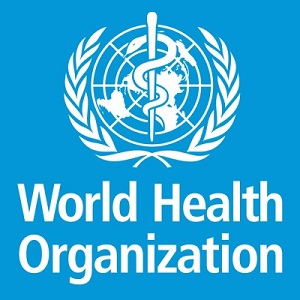COVID-19 Weekly Epidemiological Update – Global overview
Data as of 3 July 2022
Globally, the number of weekly cases has increased for the fourth consecutive week, after a declining trend since the last peak in March 2022. During the week of 27 June to 3 July 2022, over 4.6 million new cases were reported, a figure similar to that of the previous week (Figure 1). The number of new weekly deaths decreased by 12%, with over 8100 fatalities reported.
At the regional level, the number of new weekly cases increased in the Eastern Mediterranean Region (+29%), the South-East Asia Region (+20%), the European Region (+15%), and the Western Pacific Region (+4%), while it decreased in the African Region (-33%) and the Region of the Americas (-18%). The number of new weekly deaths increased in the Eastern Mediterranean Region (+34%) and the South-East Asia Region (+16%), while decreases were observed in the African Region (-50%), the Region of the Americas (-13%), the European Region (-12%) and the Western Pacific Region (-12%).
As of 3 July 2022, over 546 million confirmed cases and over 6.3 million deaths have been reported globally.
These trends should be interpreted with caution as several countries have been progressively changing COVID-19 testing strategies, resulting in lower overall numbers of tests performed and consequently lower numbers of cases detected
At the country level, the highest numbers of new weekly cases were reported from France (603 074 new cases; +33%), Germany (555 331 new cases; -2%), Italy (511 037 new cases; +50%), the United States of America (496 049 new
cases; -29%), and Brazil (334 852 new cases; -4%).
The highest numbers of new weekly deaths were reported from the United States of America (1 622 new deaths;
-19%), Brazil (1 187 new deaths; -10%), China (755 new deaths; -30%), Italy (430 new deaths; +21%), and the Russian
Federation (371 new deaths; -14%).
Special Focus: Update on SARS-CoV-2 variants of interest and variants of concern
WHO, in collaboration with national authorities, institutions and researchers, routinely assesses if variants of SARS- CoV-2 alter transmission or disease characteristics, or impact the effectiveness of vaccines, therapeutics, diagnostics or public health and social measures (PHSM) applied to control disease spread. Potential variants of concern (VOCs), variants of interest (VOIs) or variants under monitoring (VUMs) are regularly assessed based on the risk posed to global public health.
The classifications of variants will be revised as needed to reflect the continuous evolution of circulating variants and their changing epidemiology. Criteria for variant classification, and the lists of currently circulating and previously circulating VOCs, VOIs and VUMs, are available on the WHO Tracking SARS-CoV-2 variants website. National authorities may choose to designate other variants and are strongly encouraged to investigate and report newly emerging variants and their impact.1
Geographic spread and prevalence of VOCs
The Omicron VOC continues to be the dominant variant circulating globally, accounting for 92% of sequences reported to GISAID between 1 and 30 June 2022. The remaining 8% waiting to be assigned are (presumed Omicron), Delta VOC and recombinants. Among Omicron lineages, the proportions of BA.5 and BA.4 continue to increase. BA.5 has been detected in 83 countries, and during epidemiological week 25 (19 to 25 June), the proportion of BA.5 among all sequences submitted weekly to GISAID increased from 37% to 52% (Table 2). Although BA.4 is also rising globally, the rate of increase is not as high as that of BA.5. BA.4 has been detected in 73 countries, and now accounts for 12% of all sequences submitted during week 25 (up from 11% in the previous week). BA.4 and BA.5 share similar mutations in SARS-CoV-2 spike but have different mutations in non-spike regions.


























